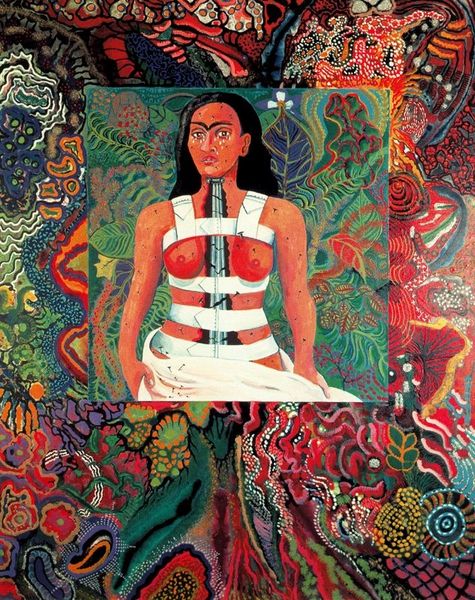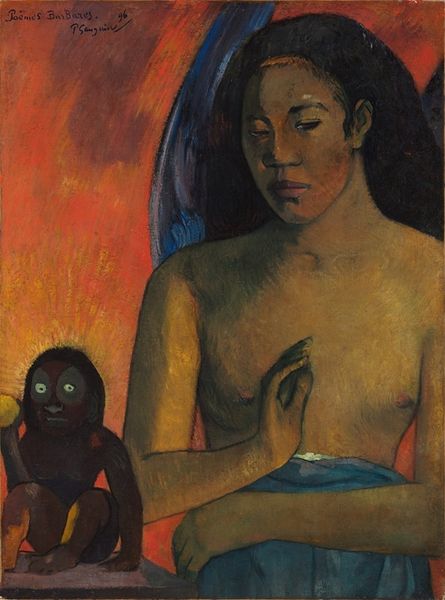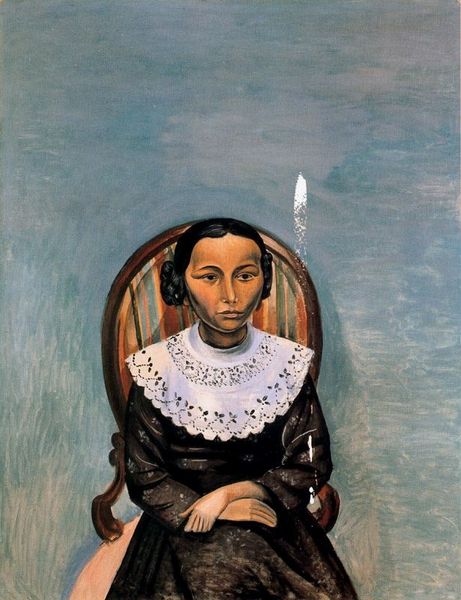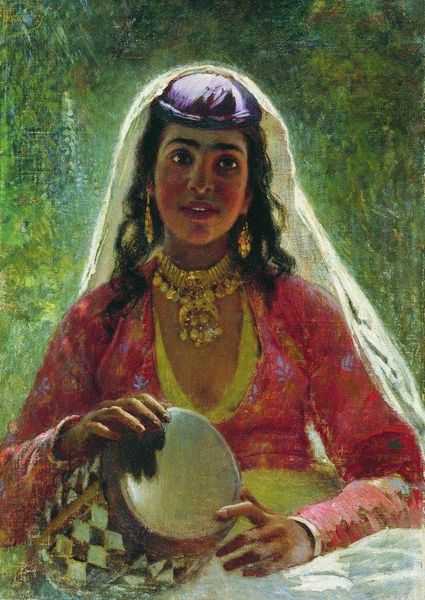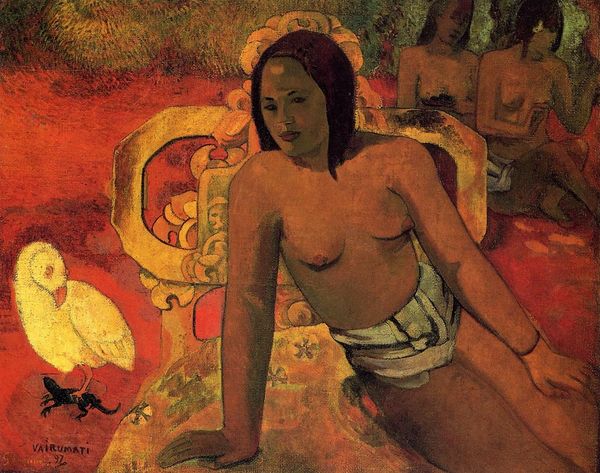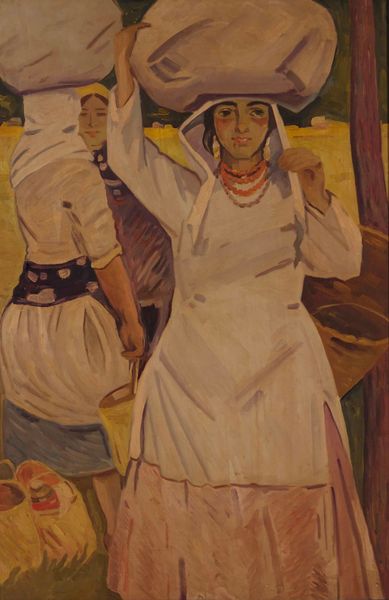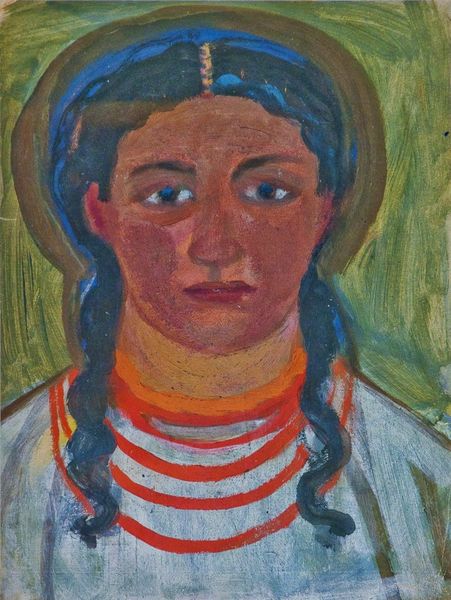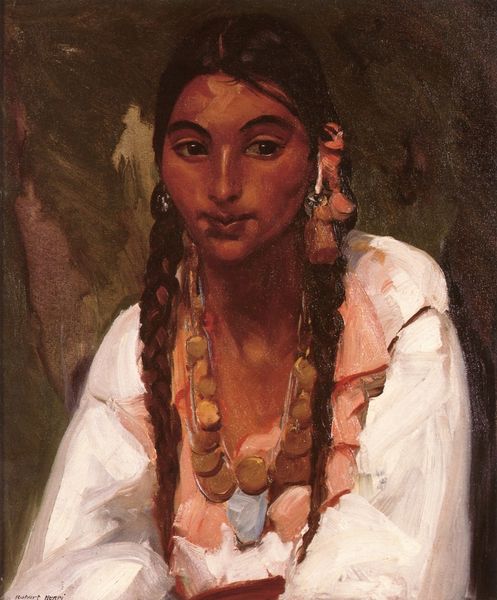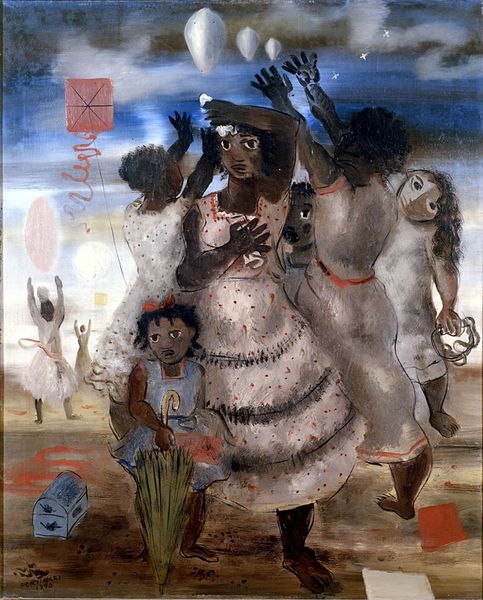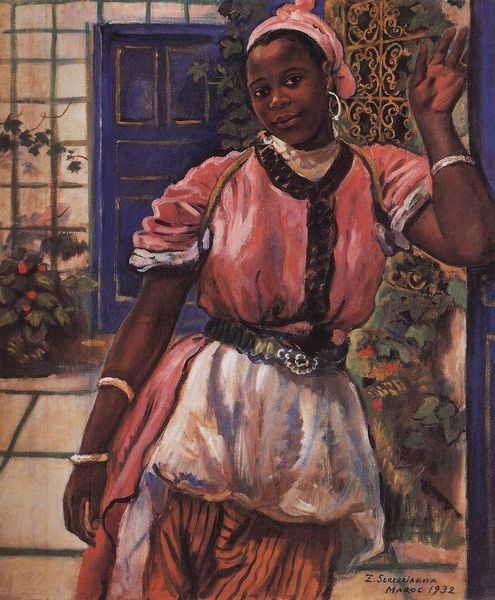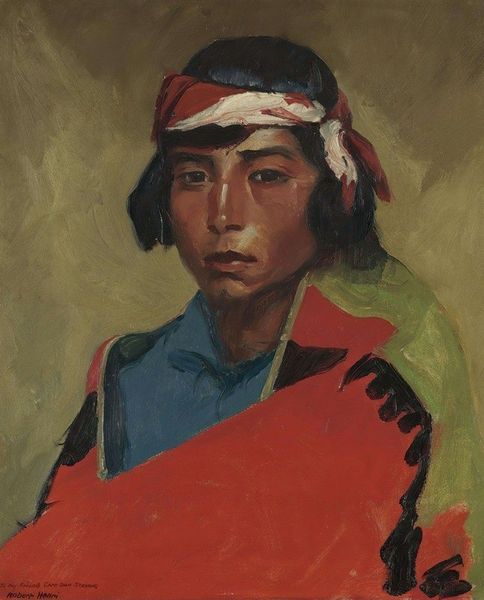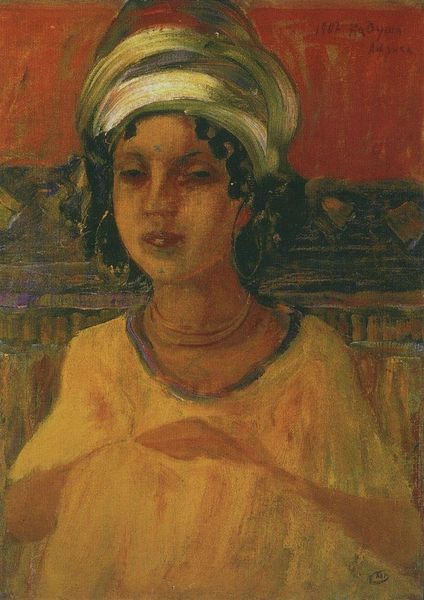
painting, oil-paint
#
portrait
#
figurative
#
painting
#
oil-paint
#
figuration
#
oil painting
#
symbolism
#
history-painting
#
post-impressionism
#
portrait art
Copyright: Public Domain: Artvee
Curator: Standing before us is Gauguin’s oil painting, "The Ancestors of Tehamana," or, as it is sometimes known, "Tehamana Has Many Parents". It’s a captivating composition, wouldn't you agree? Editor: Absolutely. The woman’s steady gaze immediately draws you in, yet there’s something haunting about the figures lurking behind her that creates a sense of unease. Curator: Indeed. The subject, Tehamana, was Gauguin's young Tahitian wife. Notice how Gauguin juxtaposes her very westernized striped dress with these intentionally primitive renderings of ancestral figures behind. Editor: The golden glyphs in the background, especially, strike me. They almost feel like a deliberate, symbolic inscription…a constructed genealogy? Curator: Precisely! Gauguin was deeply interested in conveying Tahitian culture. The ancestor figures represent Tehamana’s heritage, the unseen forces shaping her identity and lived experience within a colonial environment. Editor: And I note the stark contrast between the vibrant mangos and the more muted tones in the rendering of Tehamana herself. There is a sense of distance to her. Curator: Interesting. I read that restraint as symbolic. Tehamana is a bridge between cultures. Consider also the fan, another emblem, simultaneously obscuring and revealing. It is indicative of both Polynesian and European influence. Editor: Which brings us back to the core tension—this is a Western artist interpreting, and, perhaps, inevitably, framing Tahitian life and tradition. It feels exploitative. The work then exists as a record of its historical moment within this relationship. Curator: A fair point. It makes me wonder if Gauguin genuinely understood the weight of these ancestral figures. Are they reverence, or simply exoticism viewed through a Western lens? Editor: Perhaps that ambiguity is part of the painting’s enduring power, then. We’re still grappling with the implications of cross-cultural representation to this day. Curator: Indeed. Gauguin's exploration opens a necessary dialogue that pushes us to look at both image and history. Editor: And to see, in turn, the visual threads that persist through time and reshape themselves.
Comments
No comments
Be the first to comment and join the conversation on the ultimate creative platform.
